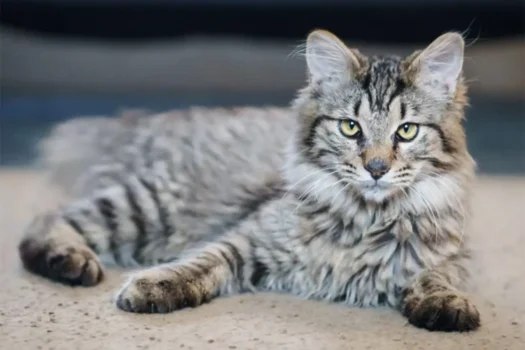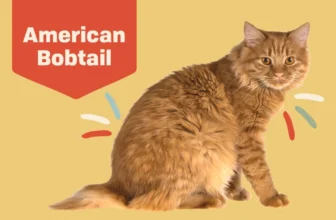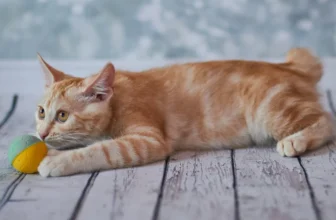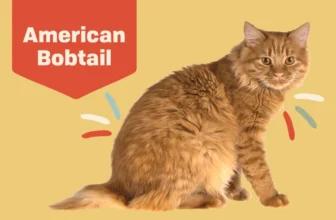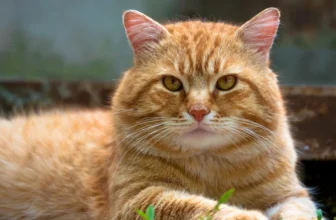As a cat lover, you’re likely familiar with the different breeds that have captured our hearts. One of these breeds is the American Bobtail, known for their muscular build and short, bobbed tail. But did you know that American Bobtails come in a variety of coat colors and patterns? Whether you’re a long-time owner or considering adding an American Bobtail to your household, explore the various colors and patterns that can accompany this feline breed. From tortoiseshell to silver, we’ll delve into the intricacies of these unique coat colors and what they mean for your cat’s health and well-being.
Basic Anatomy of American Bobtail Cats
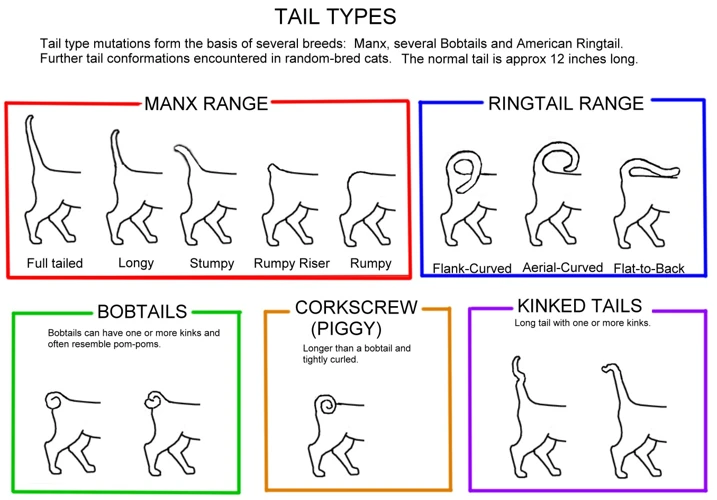
The American Bobtail is a unique and fascinating breed of cat, known for their wild appearance and affectionate nature. But, to fully appreciate their beauty and personality, it is important to start with learning about the basic anatomy of these cats. By understanding their features and how they function, we can better appreciate their individual needs and care. Let’s explore what makes the American Bobtail truly unique. For more information on the specific coat colors and patterns of American Bobtails, check out our article on tabby patterns.
Coat Structure
The coat structure of American Bobtail cats is unique, just like their personality and demeanor. This breed is known for having a thick and dense coat that can be quite wavy in some cats. The texture of the coat will vary from cat to cat, but it is generally quite plush and soft to the touch. American Bobtail cats have a double coat, with the outer coat being longer and thicker than the undercoat. This allows them to stay warm in cool weather and repel water during rainy days.
The length of the coat will vary depending on the season and climate the cat lives in. During the winter months, the coat may grow out to be longer and thicker, while it may be shorter during the hot summer months. The coat can come in a variety of colors and patterns, which we will explore further in the next section.
Taking care of the coat of American Bobtail cats is essential to maintain their health and appearance. Regular brushing can help to remove loose hair and prevent the formation of hairballs. It is also important to keep their coat clean by bathing them on occasion. However, it is recommended to not bathe them too frequently as it may dry out their skin.
The coat structure of American Bobtail cats is thick, plush, and unique. Regular grooming and occasional bathing can help to keep their coat healthy and shiny. For more information on caring for your Bobtail cat’s coat, refer to our article on “Bobtail Cat Coat Care.”
Understanding Coat Colors in American Bobtail Cats
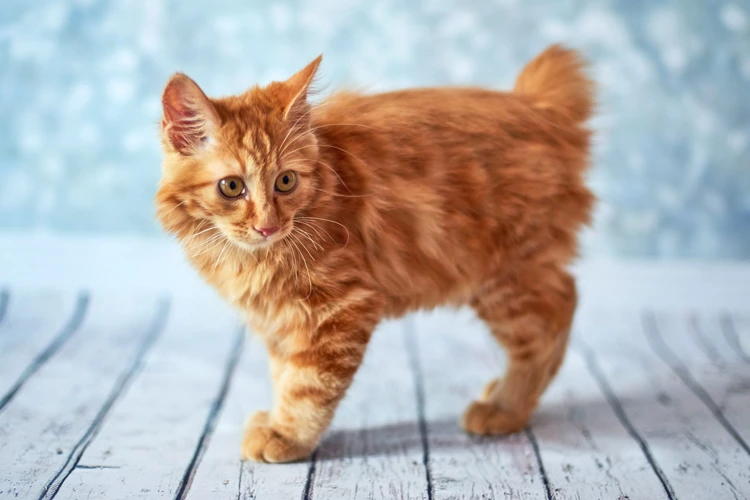
As a cat lover, it’s fascinating to understand the different coat colors and patterns that American Bobtail cats can have. From the classic tabby patterns to the unique tortoiseshell and calico coats, each hue tells a story about these feline creatures. The structure of each coat is also distinctive, which makes each cat even more special. In this section, we will explore the various coat colors of American Bobtail cats and learn about the genetic factors that determine their coats. Additionally, we will discuss the different coat structures that American Bobtails can have. Let’s dive in and discover the marvelous coats of these felines!
Tabby Patterns
Tabby patterns are some of the most common coat patterns seen in American Bobtail cats. In fact, these patterns are so common that they are often associated with the breed. Tabby cats have an ‘M’ shaped marking on their foreheads, which is one of their defining characteristics. There are four basic types of tabby patterns: classic, mackerel, spotted, and ticked.
Classic Tabbies: Also known as blotched tabbies, these cats have a pattern of swirling, marbled stripes on their coats. Some classic tabby cats have a solid stripe down their spine, while others have a broken stripe pattern.
Mackerel Tabbies: These cats have narrow, vertical stripes that run from their shoulders down to their tails. These stripes can be broken or unbroken and are often described as “tiger-like.”
Spotted Tabbies: Spotted tabbies have large, circular spots on their coats instead of stripes. These spots can be solid or open, and can be arranged in a variety of patterns.
Ticked Tabbies: Also known as agouti or abyssinian tabbies, these cats have a unique fur pattern that appears almost solid from a distance. However, each individual hair is actually banded with multiple colors, and the overall effect is a shimmering or iridescent appearance.
It’s important to note that each of these tabby patterns can come in a variety of colors, including brown, black, red, and gray. The genetics behind coat colors and patterns in American Bobtail cats is a complex topic that is still being studied by researchers. To learn more about this topic, check out our article on the genetics of coat colors in American Bobtail cats.
Cinnamon and Fawn Coats
When it comes to the American Bobtail cat breed, the cinnamon and fawn coats are among the most striking. These two colors are often grouped together because they are similar in appearance, but they are not the same. In fact, cinnamon cats have warm reddish-brown fur, while fawn cats have a slightly lighter, more beige-colored coat. Here are some interesting facts about American Bobtail cats with cinnamon and fawn coats:
1. The cinnamon and fawn colors are not always solid. Just like other coat colors, cinnamon and fawn can come in various patterns, including tabby, tortoiseshell, and bicolor. This makes for a unique and eye-catching appearance that’s sure to turn heads.
2. These cats’ coats can change over time. American Bobtail cats with cinnamon or fawn coat colors may experience a slight shift in their fur’s hue as they grow older. New hairs that grow in might have slightly different coloring than their existing coat.
3. Cinnamon and fawn cats require sunlight protection. Cat fur that is light in color tends to be thinner than darker fur, exposing their skin to sunlight. This makes them particularly susceptible to sunburns and even skin cancer. Owners should make sure their cinnamon and fawn American Bobtail cats are kept out of direct sunlight during peak hours or cover them with special protective clothing.
4. The cinnamon and fawn coats are considered valuable. American Bobtail cats with cinnamon or fawn coats are often in high demand because of their rarity, so they are generally pricier than cats with other coat colors.
Understanding the unique qualities of cinnamon and fawn coats in American Bobtail cats can help you appreciate this breed even more. Owners who want to learn more about caring for their American Bobtail’s coat, regardless of its color, can visit our previous article that discussed coat maintenance tips for American Bobtail cats. Another interesting read for those who wants to learn more about the unique coat patterns in American Bobtail cats, including cinnamon and fawn colors, is our previous article on spotting American Bobtail coat patterns.
Silver Coats
American Bobtail cats can also come in a stunning silver coat color. These cats have a light silver base with darker silver markings. The silver coat color in American Bobtail cats is quite rare, making them highly sought after by cat enthusiasts.
There are two main types of silver coat colors seen in American Bobtail cats:
- Chinchilla Silver: This is the lighter of the two silver coat colors seen in American Bobtail cats. In this type, the tips of the guard hairs are white, giving the cat a very shimmery and almost ethereal appearance. The undercoat is pale silver, which enhances the overall silvery appearance of the coat.
- Shaded Silver: The Shaded Silver Bobtail Cat is the darker version of the silver coat. These cats have a silvery white undercoat and black (or dark silver) tips on guard hairs, with a range of hues in between. The shades of gray that create the darker markings on the coat vary from one cat to another, making each cat’s coat truly unique.
Silver coat American Bobtail cats are beautiful to look at but, as with all unique coat colors, they may require specific care to maintain their coat’s health and appearance. These cats may be prone to skin dryness and sunburn since their coats are lighter in color. It’s crucial to provide them with adequate skin care, such as using moisturizing shampoos and keeping them indoors during peak sun hours.
If you are considering adding a unique and beautiful silver-coated American Bobtail cat to your family, it’s essential to research reputable breeders who specialize in this coat color. Owning a silver-coated American Bobtail cat can be a rewarding experience for any cat lover who appreciates unique and beautiful coat patterns.
White and Solid Color Coats
White and solid color coats are common among American Bobtail Cats. These cats have a solid coat color that can be black, chocolate, blue, lavender, red, or cream. The simplest of all types of coats, solid coats allow the color to be uniform throughout the entire body of the cat. Here are the popular solid coat colors of American Bobtail Cats:
| Coat Color | Description |
|---|---|
| Black | A shiny black color coats the entire body of the cat. Their eyes and paw pads are also black. |
| Chocolate | A warm brown color, similar to the color of a chocolate bar characterizes this coat. Their eyes are yellow or gold, and their paw pads are pink or cinnamon-colored. |
| Blue | A bluish-gray color, similar to a Russian Blue, this coat has a silvery cast. Their eyes are green, blue, or gold, and their paw pads are purple or lavender-colored. |
| Lavender | A light, delicate shade of gray-purple characterizes this coat. Their eyes are blue or gold, and their paw pads are lavender or rose-colored. |
| Red | A fiery copper-red or orange-red hue characterizes this coat. Their eyes are green or gold, and their paw pads are pink or cinnamon-colored. |
| Cream | A pale ivory or off-white color makes up this coat. Their eyes are blue, gold, or green, and their paw pads are pink-colored. |
It’s important to note that white and solid color coats are more prone to certain health issues such as deafness, skin cancer, and sunburn. It is highly recommended that owners of American Bobtail Cats with solid coats choose an indoor lifestyle and apply sunscreen to their cat’s nose and ears if they do go outside. A routine check-up with a veterinarian is also highly recommended.
Tortoiseshell and Calico Coats
Tortoiseshell and calico coats are two of the most striking and recognizable patterns found on American Bobtail Cats. These unique coat colors are the result of a genetic anomaly that affects the distribution of pigment throughout the cat’s fur.
Tortoiseshell cats are typically identified by their mottled coat of black, orange, and cream-colored fur. Each hair typically contains a combination of these colors, giving the cat an overall speckled appearance. Interestingly, tortoiseshell cats are almost always female, due to the way the genes for coat color are passed down from parents to offspring. This makes finding a male tortoiseshell cat quite rare.
Calico cats, on the other hand, are identified by their white, black, and orange fur. Like tortoiseshell cats, each hair typically contains a combination of these colors, though the distribution of the colors tends to be more distinct and patchy. Calico cats can come in a variety of sub-patterns, such as brindle or dilute calico, which refer to variations in the intensity and distribution of color in the fur.
Having a tortoiseshell or calico coat does not necessarily mean a cat is predisposed to any health concerns. However, it is important to note that female cats with these coat colors may be at a slightly increased risk for developing certain reproductive disorders, such as ovarian cysts. As with any cat, it is important to keep an eye out for any signs of discomfort or distress, and to seek veterinary attention as needed.
Tortoiseshell and calico coats are truly unique and beautiful, and are a sure way to turn heads among American Bobtail Cat enthusiasts.
Odd-Eyed Cats
Odd-eyed American Bobtail cats are the ones with two different-colored eyes. This unique genetic trait is a result of a completely healthy mutation that affects the gene responsible for eye color. In such cats, one eye could be blue, while the other one could be green and gold.
Studies show that the gene mutation responsible for odd-eyed cats also results in varying degrees of hearing loss. It is essential to examine the animal’s hearing abilities and ensure their safety while outside.
It is not uncommon to find odd-eyed American Bobtail Cats in show rings, as it is a highly desirable trait due to its uniqueness. However, this genetic quirk does not just come in the standard coat colors of the breed; it can also be seen in Calicos, Tortoiseshells, and Tabby patterns.
Below is a table that highlights some basic information about odd-eyed cats:
| Characteristic | Description |
|---|---|
| Pigmentation: | The melanin pigment in one eye is different from that in the other eye, resulting in their different colors. |
| Genetics: | The mutation that causes odd-eyes is entirely harmless and is inherited similarly to coat colors amongst American Bobtail cats. |
| Hearing: | Most odd-eyed cats have some degree of hearing loss, which is related to the mutation that causes this trait. |
| Appearance: | The striking appearance of an odd-eyed cat can make them highly desirable as pets, especially in terms of show quality. |
If you have an odd-eyed American Bobtail cat, it is essential to be aware of his unique traits and monitor them carefully for any health issues. Additionally, if you are considering adopting an odd-eyed Bobtail, be sure to research thoroughly to understand their potential hearing loss and give them the right treatment and care.
Points and Mink Patterns
Points and mink patterns are also coat colors found in American Bobtail cats. The mink coat pattern is a newer mutation of the pointed pattern, with its coat appearing even softer and more velvety than the pointed pattern. A pointed coat color focuses on the cat’s extremities, such as the legs, tail, ears, and face, and these areas will appear darker than the rest of the fur.
In contrast, the mink pattern also has darker points but has a lighter color than the pointed pattern in other areas. This creates a more gradual color transition from the points to the lighter areas of the fur.
To better understand the differences, let us have a look at the table below:
| Coat Color | Description |
|---|---|
| Seal Point | Seal-brown color on points |
| Chocolate Point | Warm brown color on points |
| Lilac Point | Pale pink-gray color on points |
| Blue Point | Gray-blue color on points |
| Seal Mink | Seal-brown colored points and lighter body color than pointed pattern |
| Chocolate Mink | Warm brown colored points and lighter body color than pointed pattern |
| Lilac Mink | Pale pink-gray colored points and lighter body color than pointed pattern |
| Blue Mink | Gray-blue colored points and lighter body color than pointed pattern |
It’s important to note that while points and mink patterns are beautiful, they come with unique health considerations. These cats are more prone to sunburn on the darker points, so their owners should provide ample shade and avoid exposing them to direct sunlight. Owners should also ensure that their cat’s skin is well moisturized to keep it healthy.
Bicolor and Tricolor Cats
Bicolor and tricolor American Bobtail cats are known for their unique coat patterns, where their fur displays two or three distinct colors. These cats are often referred to as “tuxedo” cats due to their black and white coat pattern resembling a man’s formal suit. Bicolor cats may have a white base coat with patches of black, gray, orange or other colors, while tricolor cats have white, black and orange (or red) coloring. Here is a breakdown of the different bicolor and tricolor patterns:
| Bicolor Pattern | Description |
|---|---|
| Van Pattern | A predominantly white American Bobtail with a few black or orange markings on the head and tail. This pattern is often referred to as “Van” due to its resemblance to the Turkish Van breed. |
| Tuxedo Pattern | A black and white bicolor pattern where the black is prominently displayed on the back, head and tail, with white markings on the face, chest, and paws. |
| Cap-and-Saddle Pattern | Another black and white bicolor pattern, where the black coloration is concentrated on the upper half of the body, while the lower half and the underside are white in color. This creates the appearance of a cap and saddle on the cat’s back. |
| Tricolor Pattern | Description |
|---|---|
| Calico Pattern | A tricolor pattern where large patches of white fur are intermixed with patches of orange and black fur. These patches can vary in size and distribution, creating a unique and individualized pattern. |
| Tortoiseshell Pattern | A tricolor pattern where the black and orange colors are blended together in a mixed, marbled pattern. These cats may also have white markings, but they are less prominent than in the calico pattern. |
| Torbie Pattern | A combination of the tortoiseshell and tabby patterns, where the orange fur has tabby stripes running through it. These cats also have black fur with the same tabby markings. |
American Bobtail cats with bicolor and tricolor patterns are unique and eye-catching. However, it is important to note that not all cats with these patterns are purebred American Bobtails, and it is important to do research or consult a breeder to ensure that a cat is a true American Bobtail.
Health Considerations for American Bobtail Cats with Unique Coat Colors
As delightful as American Bobtail cats with unique coat colors can be, their distinctive looks may also require some additional care to keep them healthy and comfortable. It is essential to note that certain coat colors may pose specific health concerns that owners should be aware of to keep their furry friends in top condition. In this section, we will explore some of these health considerations and provide tips for maintaining the well-being of American Bobtail cats with rare and beautiful coats. Let’s dive in and discover what we need to know to keep our feline friends healthy and thriving!
Skin Care and Sunburn
It is essential to take proper care of American Bobtail cats with unique coat colors to ensure their long-term health and well-being. When it comes to cats with lighter or white coats, sunburn is a major concern. Sunburn can lead to skin irritation, flakiness, and even skin cancer. Here are some tips on how to protect your Bobtail cat’s skin:
- Limit exposure: Avoid letting your cat spend extended periods of time in direct sunlight. Provide a shaded area for them to rest.
- Sunscreen: Apply a pet-safe sunscreen to the areas of your cat’s skin that are exposed to the sun. Be sure to use products that are specifically designed for cats and do not contain any harmful chemicals or fragrances.
- Clothing: Consider putting protective clothing on your cat, such as a lightweight t-shirt or hat.
- Monitor for symptoms: Keep a close eye on your cat’s skin for any signs of sunburn, irritation, or flakiness. If you notice any of these symptoms, speak to your veterinarian about the best course of treatment.
It’s important to note that cats with shorter coats may not require as much sun protection as those with longer, thicker coats. However, it’s always better to err on the side of caution and take preventive measures to ensure their safety and health. Remember to consult with your vet for additional advice and guidance on caring for your unique-featured American Bobtail cat.
Conclusion
In conclusion, American Bobtail cats come in a wide range of coat colors and patterns, each with their unique beauty and personality. From silver and white to cinnamon and fawn, from Tortoiseshell to calico, these cats demonstrate a great variety of colors and patterns that make them stand out from other feline breeds. The color of their coat is not just a matter of aesthetics, but also can impact their health and well-being.
It is important to always consider the potential health concerns that unique coat colors may pose, such as the risk of sunburn and skin sensitivity. By taking proper care of their coats, through grooming and regular vet check-ups, owners can help their American Bobtail cats live long, healthy, and happy lives.
Overall, the American Bobtail is a unique and fascinating breed with a wide range of coat color variations. Understanding these coat colors and their impact on the cat’s health can help owners provide the best care for their beloved pets. By embracing the various coat colors and patterns, owners can celebrate the individuality of their cats, and enjoy their companionship for many years to come.
Frequently Asked Questions
What is the American Bobtail cat?
The American Bobtail cat is a breed known for their short tail and playful nature. They were first recognized as a breed in the 1960s, and have since become a popular choice for pet owners.
What are the basic anatomy features of American Bobtail cats?
American Bobtail cats have a muscular build with a short, stubby tail. They also have large, expressive eyes and wide-set ears with tufts of fur on the tips.
What is a tabby pattern in American Bobtail cats?
The tabby pattern in American Bobtail cats is characterized by a distinctive “M” shape on their forehead and stripes or spots on their coat. This is the most common and recognizable coat pattern in the breed.
What are cinnamon and fawn coat colors?
Cinnamon and fawn coat colors in American Bobtail cats are variations of brown and tan shades. Cinnamon is a rich, reddish-brown, while fawn is a lighter, more muted tan color.
What are silver coat colors?
Silver coat colors in American Bobtail cats have a white base with a silver overlay, giving them a shiny, metallic appearance. This coat color is quite rare and highly sought after by cat owners.
What are tortoiseshell and calico coat colors?
Tortoiseshell and calico coat colors in American Bobtail cats are characterized by splotches or patches of black, orange, and white fur. Tortoiseshell cats have mainly black and orange fur, while calico cats have white patches mixed in as well.
What are odd-eyed cats?
Odd-eyed cats are cats with two different-colored eyes. This is a unique genetic trait that can occur in American Bobtail cats, as well as other breeds.
What is a point pattern in American Bobtail cats?
A point pattern in American Bobtail cats is characterized by a lighter body coat with darker fur on their face, ears, paws, and tail. This is similar to the Siamese cat coat pattern.
What are bicolor and tricolor cats?
Bicolor cats have predominantly white fur with patches or spots of another color, while tricolor cats have three colors in their coat, usually black, orange, and white. These coat patterns can occur in American Bobtail cats as well.
How to take care of American Bobtail cats with unique coat colors?
American Bobtail cats with unique coat colors, such as silver or white, may require more grooming and care to maintain their coat’s unique appearance. This may include regular baths, coat brushing, and sun protection to prevent skin damage.

